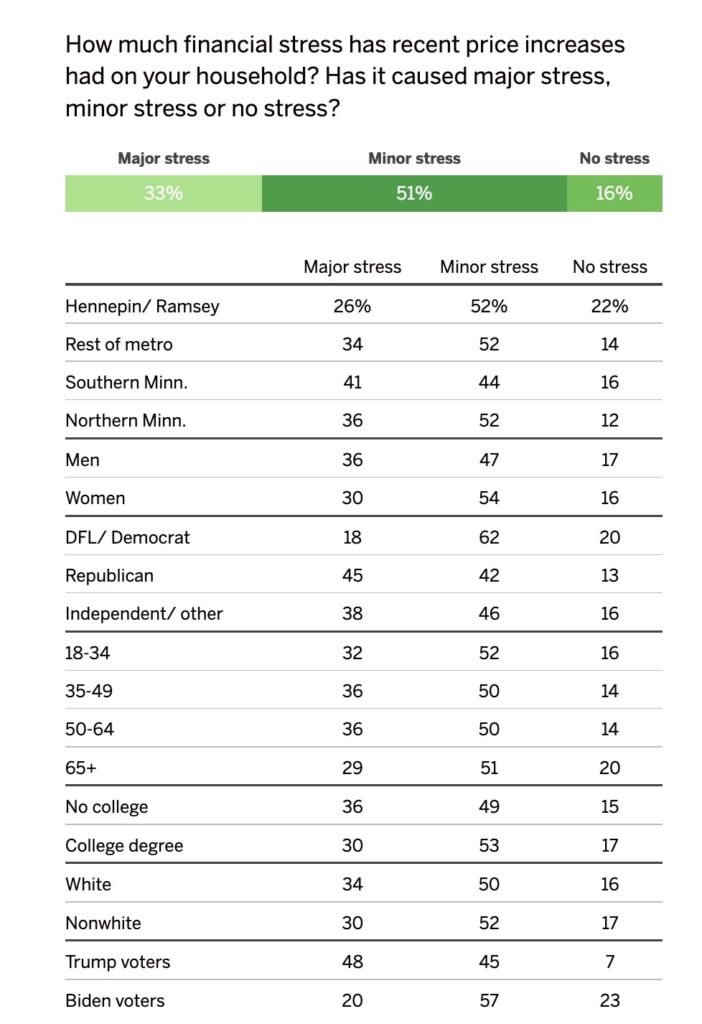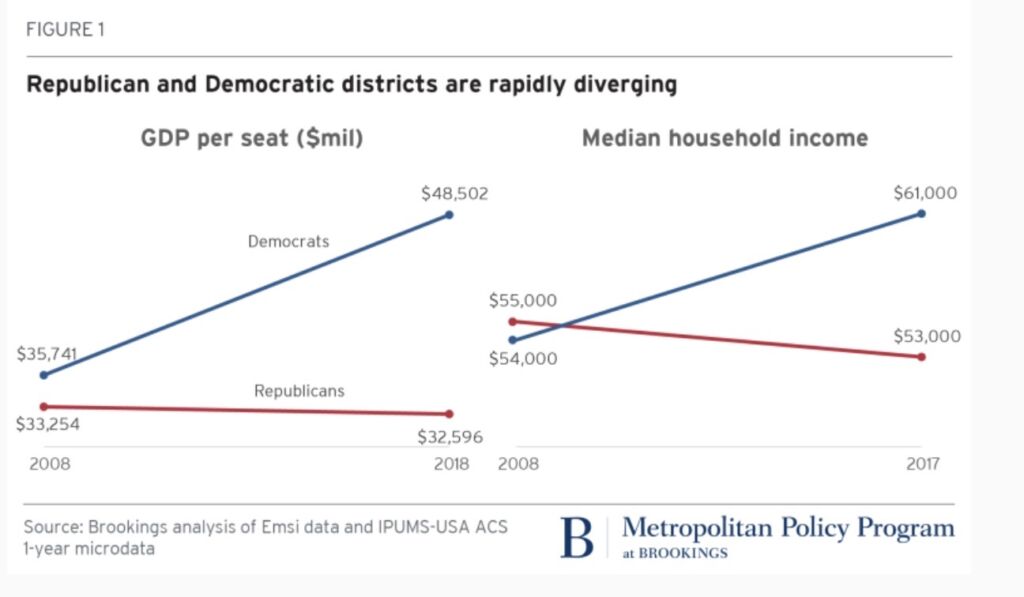CBO: Poor households are disproportionately affected by inflation
The majority of Minnesotans are feeling the financial stress from rising prices — albeit to varying degrees. A recent Star Tribune poll reported that while 33 percent of Minnesota households reported feeling major financial stress, 51 percent reported minor stress and 16 percent reported no stress. The degree to which Minnesotans are suffering from high prices varies by location, gender, political affiliation, age, race, and level of education.

With inflation at historic highs, such differences can seem puzzling. However, when we think about it in terms of income, it makes sense that different people are affected differently by inflation.
In basic economic terms, inflation essentially affects the ability of people to afford goods and services. So, ultimately how people’s incomes are affected depends on their level of income.
People with higher incomes often have savings to cushion against rising prices, and they are also able to keep their income in assets that appreciate in value rather than in cash — which falls in value as inflation rises. Poor households tend to have no financial cushion. Additionally, the poor also tend to spend a big proportion of their income on necessities like housing, groceries, and gas. And prices for these commodities are usually big drivers of inflation.
Evidence from the CBO
A recently published study by the Congressional Budget Office (CBO) regarding the effects of inflation provides evidence to the phenomenon that poor households are indeed the most affected by rising prices.
According to the CBO, the share income that households would use to buy a certain bundle of goods has increased between 2019 and 2020, reducing households’ income. But those effects have differed by level of income, with low-income households facing a disproportionate impact.
Since 2019, the share of such income that households would use to purchase a 2019 consumption bundle has increased for households in the lowest income quintile because prices have grown faster than their income, on average; that share decreased for all other households, whose income gains outpaced price increases.
Certainly, transfer payments from the government during the pandemic have cushioned households from rising prices. But still, all things considered,
…lower income households have experienced a larger increase in the price of their 2019 consumption bundle over the past three years than higher income households have.
Income differences among the demographics
Variations in location, gender, political affiliation, race, and level of education do affect income levels.
According to evidence from the Brookings Institution, for example, since at least 2008, incomes between Republicans and Democrats have diverged, with households identifying as Democrats seeing their incomes rise and vice-versa.

Similarly, older individuals tend to have higher incomes than younger people; highly educated individuals tend to have higher incomes than non-educated individuals; white individuals generally tend to have higher incomes than non-white individuals, and metro regions are associated with higher incomes than rural areas.

Along the lines of gender, men tend to have more income than women. Moreover, women shoulder a heavier burden of domestic spending including groceries, so they are disproportionately impacted by inflation. This can explain why a higher share of men than women was not financially stressed by inflation. But the fact that a higher share of men expressed major financial stress than women is hard to explain on income levels alone.
According to some research, women generally have high inflation expectations and they overstate inflation. So, it is possible that women were more prepared for higher prices than men — since men tend to understate inflation and hold low inflation expectations.
It all boils down to income differences
Factors like race, gender, age, and political affiliation are big drivers of income. So, to an extent that different socio-economic demographics experience inflation differently, that is more likely to be a reflection of differences in income than anything else
Indeed looking at the data, one thing is clear; regardless of age, gender, race, or other factors, poor Americans remain the biggest losers from high and rising prices.